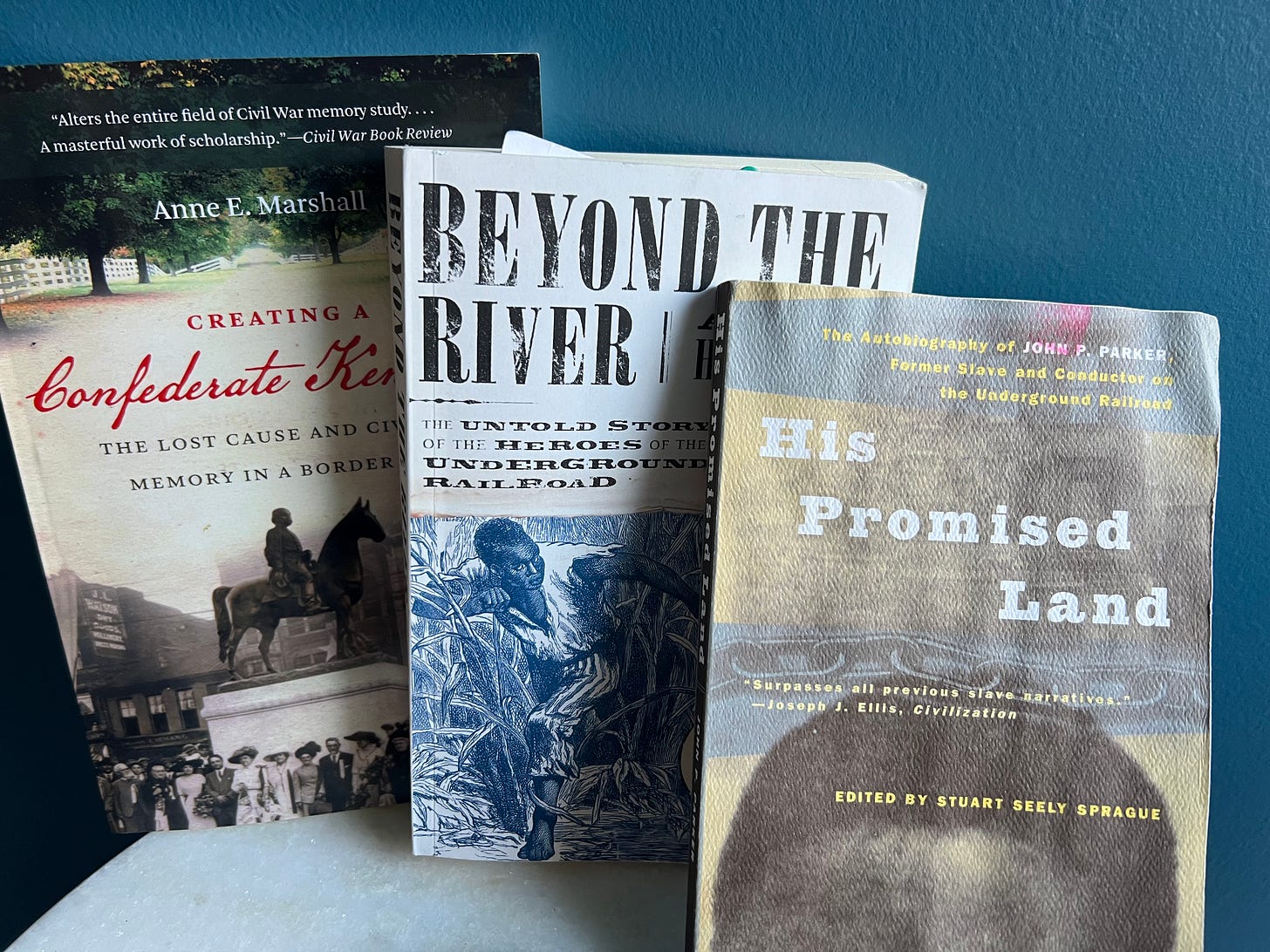December '23 Trivia Quiz
The Lost Industry Edition
My first newsletter each month is ten trivia questions about the six states that border the Ohio River (Pennsylvania, West Virginia, Ohio, Kentucky, Indiana, Illinois). This month, we’ll focus on industrial history.
I pull several questions from my prior newsletters, so faithful readers have a leg up! ANSWERS IN THE FOOTNOTES, so don’t click them until you’ve made your final choices.

QUESTIONS
Which former uranium enrichment site is expected to take longer to clean up? The one near Portsmouth, Ohio, or the one in Paducah, Kentucky?1
Name the Ohio River border state that was the nation’s largest producer of gas 1906-1917.2
What Ohio River city sits at the confluence of the Ohio and Little Kanawha Rivers, and is currently home to an oil and gas museum?3
Name the Ohio River city that produced over 50% of the nation's ceramic output in the late 1800s and early 1900s.4
Evansville, Indiana was a major stop for steamboats along the Ohio River, and it was the home port for a number of companies engaged in trade via the river. By 1900 it had 41 factories employing approximately 2,000 workers manufacturing which category of consumer goods?5
This Illinois city’s strategic location brought an economic boom during the Civil War. At the height of its prosperity, its post office was the third busiest in the United States, but the population has since decreased for eight consecutive US census reports (1950 to 2020). The 2021 census places its population below 1700. Name that city.6
Wheeling, West Virginia was once home to a thriving tannery industry. What raw material used in manufacturing gave Wheeling an advantage?7 Hint: it wasn’t the hides themselves.
West Virginia’s tanneries began to disappear in the 20th century as deforestation depleted local tanbark supplies. Although chemical tanning had been introduced during the last quarter of the 19th century, it had not penetrated the tanbark regions. What could have caused the declining demand for tanned goods?8 Hint: what kinds of things replaced demand for harness goods and sole leather?
The area near Portsmouth, Ohio, was once famous for the rich clay deposits necessary for manufacturing firebrick and paving brick. Firebrick could withstand 1,500 to 2,000 degrees F without melting or crumbling. What was firebrick mostly used for in addition to blast furnaces and rolling mill furnaces?9 Hint: every American has seen hundreds of them without ever going into a manufacturing facility.
By the mid-20th century, what commodity represented 50% of the tonnage shipped on the Ohio River?10 You shouldn’t need a hint for this one.
Quiz Intermission Message
In September, I listed several Ohio River Valley books I’d purchased on my recent research trip to the area. If anyone on your shopping list is student of the region’s Civil War history, here’s a reminder of some of those titles.
Creating a Confederate Kentucky, explains why Kentucky behaves like a former Confederate state up to the present day, although it never seceded. This identity didn’t begin to form until the war was over. I’m being simplistic here, but in a nutshell, white Kentuckians had expected to be rewarded for their loyalty to the Union by being permitted to remain a slave state. They are still wrestling with that today.
Beyond the River brings to life the stories of men and women, both Black and white, who fought against slavery along the Ohio River through the Ripley line of the Underground Railroad, one of the busiest in the region. Virginia’s ownership of the area around Ripley, known as the the Virginia Military District, was set aside for veterans of the Revolutionary War. When the Northwest Territory was established as slavery-free, several Virginia slaveholders freed them, then paid them in food, clothing, shelter and money for their work. Some of the formerly enslaved made their homes there with the white settlers and others set up colonies of their own.
His Promised Land is a slave narrative from John P. Parker, who may be the most interesting American ever born. Born to an enslaved mother and a white Virginian that Mr. Parker described as an “aristocrat,” he was sold at the age of eight and eventually bought his freedom after many harrowing runaway attempts detailed in the book. When he made it to Ohio, he literally worked day and night; by day as an inventor and business owner, and by night as a conductor on the Underground Railroad. He was issued US patents for an improved tobacco press, a portable tobacco press, and soil pulverizer, and used his earnings to send his sons to university. Someone should make a biopic of him.
ANSWERS
Paducah. I wrote about it in November, 2023. Cleanup activities at Portsmouth will continue until 2039-2043. Paducah’s remediation might last until 2065-70
West Virginia.
Parkersburg, West Virginia. The oil and gas museum is reviewed here.
East Liverpool, Ohio. I visited its ceramics museum in 2022!
Hardwood furniture. Hardwood taken from around the region fed the growing lumber and furniture industry. Fortunes made in mining, manufacturing, and wholesale trade resulted in Victorian-era homes in the Riverside Drive district near downtown.
Tanbark. To tan hides, you need cheap fuel and tannins (originally from tanbark). West Virginia’s forests were full of tannin-producing trees including chestnut and oak. As a bonus, the exhausted tannin bark could be burned for fuel. By 1880, as railroads penetrated the state, West Virginia’s 93 tanneries produced $1.45 million in finished leather. Pennsylvania and New York tanners came to the state to open branch tanneries, or they completely moved their operations to West Virginia as tanbark disappeared in their home regions. Source.
Demand for harness leather diminished as automobiles took over the roads, and synthetics, such as synthetic rubber, cut into the market for sole leather. Source.
Firebrick lined blast furnaces, rolling mill furnaces and locomotive train engines.


